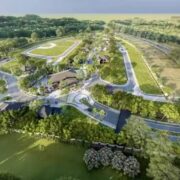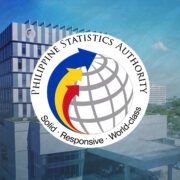Climate-informed land use policy
Floods, storm surges, and landslides increasingly put our communities across the country in harm’s way and aggravate existing inequities in household wealth, well-being, and economic opportunity. Low-income communities, particularly those situated in coastal areas, floodplains, and river basins, face the greatest exposure to climate hazards because of historic discriminatory land policies, which have forced people to settle in vulnerable areas. These households are the most at risk of destructive climate events.
Local governments in areas prone to climate hazards face difficult decisions to address climate risk and reduce the vulnerability of their residents. In many places, the most vulnerable areas are already largely built out, communities do not want to relocate, and the cost to retrofit homes is high. Supporting residents in these communities is critical but is challenging to fund and implement. However, local land use policy presents one tool to direct new developments out of harm’s way and to require new construction in vulnerable areas to be built to a higher and safer standard.
Yet, government’s recognition of the risk associated with building in particular areas may reduce the value of homes in these locations. Fear of this scenario is valid, but if local governments do not recognize climate risk and discourage future unsafe development, the number of people at risk from climate disasters will continue to grow. Unfortunately, this will also happen without new development given the growing frequency and intensity of climate-related weather events.
Furthermore, today’s housing crisis necessitates the building of more housing especially at price points affordable to low-income households. However, building new housing everywhere faces the risk of putting more households in harm’s way, whether from flooding, storm surges, earthquakes, or other dangerous hazards. It is critical that this new housing be built to standards prepared for future climate impacts and in locations more prepared for weather events and natural hazards. Climate-informed policy is a key way to address this, ideally alongside policy changes to accelerate the development of a more affordable housing supply.
While disaster risk reduction and climate change adaptation have been a goal of local governments’ comprehensive land use plans, only a few localities have incorporated resilience objectives into zoning strategies. Today, policymakers realize they must enhance long-term resilience with guidance directing future development patterns to protect human and economic vulnerabilities to climate-related weather events. To do this, localities should include standards in their zoning ordinances that legally require mitigation practices in the location, siting, design, construction, and uses of their projects. Because effective mitigation may require property owners to act in ways that go beyond their individual interests to ensure that community goals are met, it is essential that the force of law (e.g., zoning regulations) be brought to bear.While localities are increasingly considering flood vulnerability and landslides in their land use planning and zoning, other disaster hazards present many, if not more acute, risks to their residents. While most localities rely on the National Building Code (NBC) to address structural and other building-related vulnerabilities, this may not be relevant to local conditions and location-specific risks. Neither does the NBC redirect new development.
Zoning regulations provide one of the most thorough ways to integrate climate-informed considerations into future development. However, localities should improve their zoning ordinances to better regulate the built environment by including considerations such as building density and building footprint, as well as to incentivize new development in disaster-safe areas. This will not only keep new residents out of harm’s way but also generate savings due to reduced exposure to economic disruption from climate events.
Land use policy presents a key opportunity to reduce exposure to climate hazards and to require higher, safer standards for new development. Moreover, local control of land use policy also ensures that planning is calibrated with the community’s needs.
—————-Nathaniel von Einsiedel is a fellow of the Philippine Institute of Environmental Planners and the principal urban planner of CONCEP Inc.
The author (nveinsiedel@gmail.com) is a Fellow and Past President of the Philippine Institute of Environmental Planners and Principal Urban Planner of CONCEP Inc.















